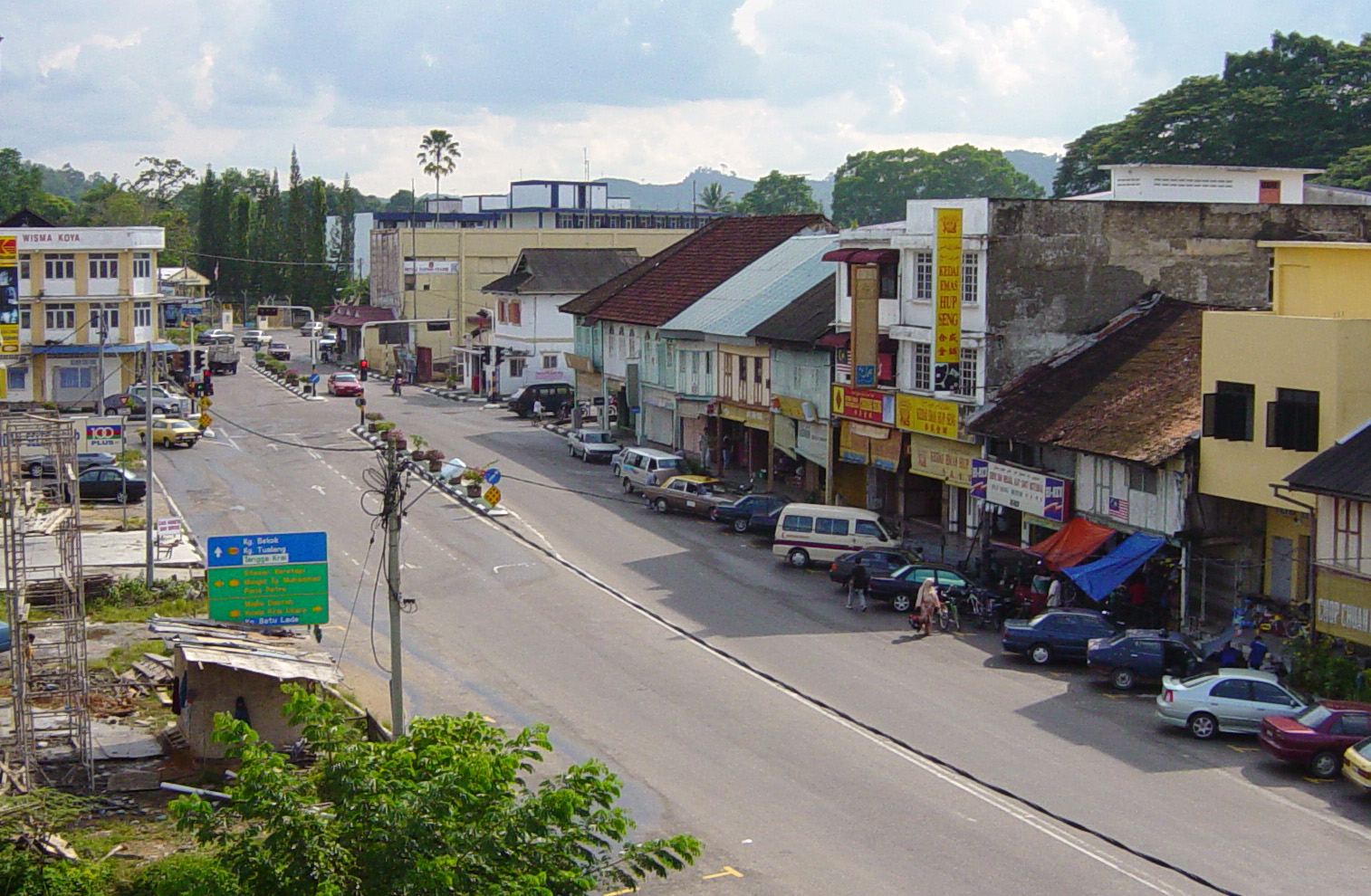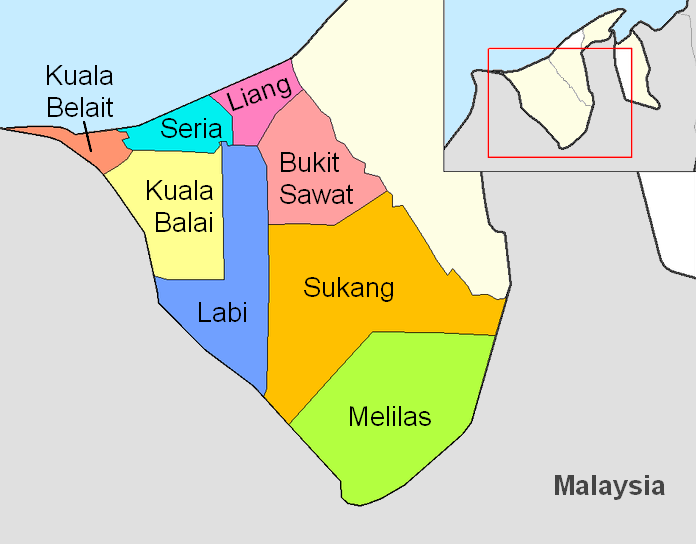|
Kuala Krai District
Kuala Krai District is a district (jajahan) in Kelantan, Malaysia. Historically, it was known as ''Kuala Lebir''. Background The Kuala Krai district is a landlocked district in the centre of the State of Kelantan in northeastern Malaysia. The land is hilly, and before the 20th century the entire area was tropical rain forest. The territory contains the confluence of two major rivers, the Lebir and Galas, to form the Kelantan River, which then flows some 70 km northwards through one of the most densely populated flood plains on the Malay Peninsula to its estuary in the South China Sea near the State capital of Kota Bharu. Kuala Krai was the most affected district in Kelantan by a massive 2014 flood known as Bah Kuning that resulted in property loses and in the federal government declaring a State of Emergency. This catastrophic event was cushioned by great societal support and aid from NGOs. As transport links improved during the 20th century, people moved into the area ... [...More Info...] [...Related Items...] OR: [Wikipedia] [Google] [Baidu] |
Jawi Script
Jawi (; ace, Jawoë; Kelantan-Pattani Malay, Kelantan-Pattani: ''Yawi''; ) is a writing system used for writing several languages of Southeast Asia, such as Acehnese language, Acehnese, Banjar language, Banjarese, Kerinci language, Kerinci, Maguindanao language, Maguindanaon, Malay language, Malay, Minangkabau language, Minangkabau, Tausug language, Tausūg, and Ternate language, Ternate. Jawi is based on the Arabic script, consisting of all of the original 31 Arabic letters, and six additional letters constructed to fit the phonemes native to Malay, and an additional phoneme used in foreign loanwords, but not found in Classical Arabic, which are ''ca'' ( ), ''nga'' ( ), ''pa'' ( ), ''ga'' ( ), ''va'' ( ), and ''nya'' ( ). Jawi was developed from the Spread of Islam in Southeast Asia, advent of Islam in the Maritime Southeast Asia, supplanting the earlier Brahmic scripts used during Hindu-Buddhist era. The oldest evidence of Jawi writing can be found on the 14th century Tere ... [...More Info...] [...Related Items...] OR: [Wikipedia] [Google] [Baidu] |
Kelantan River
The Kelantan River (named ''Sungai Kelantan'' in the standard Malay language or ''Sunga Kelate'' as it is pronounced in Kelantanese language) is the major river in Kelantan, Malaysia. It drains a catchment area of about 11900 km² in north-east Malaysia including part of the Taman Negara National Park, and flows northwards into the South China Sea. The rainfall over the area varies between 0 mm in the dry season (March–May) to 1750 mm in the monsoon season (November–January). The average runoff from the area is about 500 m³/s. Name and extent The description of the river is complicated by the local naming convention: instead of using the name ''Kelantan river'' from estuary to source, the name is only used for the section from the estuary to the confluence of its two main tributaries, the Galas River and the Lebir River, near the town of Kuala Krai. The same naming convention applies to these tributaries. Thus to describe the main river from source to mouth ... [...More Info...] [...Related Items...] OR: [Wikipedia] [Google] [Baidu] |
Datuk
Datuk (or its variant Dato or Datu) is a Malay title commonly used in Brunei, Indonesia, and Malaysia, as well as a traditional title by Minangkabau people in West Sumatra, Indonesia. The title of the wife of Datuk is Datin. Origin The oldest historical records mentioning about the title ''datuk'' is the 7th century Srivijayan inscriptions such as Telaga Batu from Palembang, Indonesia, to describe lesser kings or vassalized kings. It was called ''dātu'' in Old Malay language to describe regional leader or elder, a kind of chieftain that rules of a collection of ''kampungs'' (villages) called Kedatuan. The Srivijaya empire was described as a network or mandala that consisted of settlements, villages, and ports each ruled by a datu that vowed their loyalty (''persumpahan'') to the central administration of Srivijayan Maharaja. Unlike the indianized title of raja and maharaja, the term datuk was also found in the Philippines as datu, which suggests its common native Austronesi ... [...More Info...] [...Related Items...] OR: [Wikipedia] [Google] [Baidu] |
Loh Sea Keong
Loh Sea Keong (; born 11 February 1986) is a Malaysian professional cyclist, who currently rides for UCI Continental team . In the 2013 Jelajah Malaysia race, Loh made history by becoming the first Malaysian rider to win the competition, a Union Cycliste Internationale (UCI) race. Career Marco Polo Cycling Team In 2005, Loh left Malaysia at the age of 19 to achieve his dream of becoming a full-time professional cyclist. He joined the Chinese team, , based in Europe. He rode for the team until the end of 2011. OCBC Singapore Continental Cycling Team After failing to sign a contract with any foreign team, Loh returned to Malaysia consider his options and give himself a 2-year target to re-invigorate his career or stop altogether. Loh then accepted an offer from the first Singaporean UCI Continental team, to ride for them. Argos–Shimano At the Shimano Highway Challenge in Malaysia on 24 November 2013, it was announced that he would be the first South East Asian to join a ProT ... [...More Info...] [...Related Items...] OR: [Wikipedia] [Google] [Baidu] |
Map Of Kuala Krai District, Kelantan
A map is a symbolic depiction emphasizing relationships between elements of some space, such as objects, regions, or themes. Many maps are static, fixed to paper or some other durable medium, while others are dynamic or interactive. Although most commonly used to depict geography, maps may represent any space, real or fictional, without regard to context or scale, such as in brain mapping, DNA mapping, or computer network topology mapping. The space being mapped may be two dimensional, such as the surface of the earth, three dimensional, such as the interior of the earth, or even more abstract spaces of any dimension, such as arise in modeling phenomena having many independent variables. Although the earliest maps known are of the heavens, geographic maps of territory have a very long tradition and exist from ancient times. The word "map" comes from the , wherein ''mappa'' meant 'napkin' or 'cloth' and ''mundi'' 'the world'. Thus, "map" became a shortened term referring to ... [...More Info...] [...Related Items...] OR: [Wikipedia] [Google] [Baidu] |
Kampung Pahi
Kampung Pahi is a village in Kuala Krai District in the state of Kelantan, Malaysia Malaysia ( ; ) is a country in Southeast Asia. The federation, federal constitutional monarchy consists of States and federal territories of Malaysia, thirteen states and three federal territories, separated by the South China Sea into two r .... References Villages in Kelantan {{Kelantan-geo-stub ... [...More Info...] [...Related Items...] OR: [Wikipedia] [Google] [Baidu] |
Manek Urai
Manek Urai is a small town in Kuala Krai District, Kelantan, Malaysia Malaysia ( ; ) is a country in Southeast Asia. The federation, federal constitutional monarchy consists of States and federal territories of Malaysia, thirteen states and three federal territories, separated by the South China Sea into two r .... See also * Manek Urai by-election, 2009 References Kuala Krai District Towns in Kelantan {{Kelantan-geo-stub ... [...More Info...] [...Related Items...] OR: [Wikipedia] [Google] [Baidu] |
Mukim
A mukim is a type of administrative division used in Brunei, Indonesia, Malaysia and Singapore. The word ''mukim'' is a loanword in English. However, it was also originally a loanword in Malay from the Arabic word: (meaning ''resident''). The closest English translation for mukim is township. Usage Brunei In Brunei, a mukim is the immediate subdivision of a district (). The equivalent English word for 'mukim' is 'township'. There are 38 mukims in Brunei. Each mukim is an administrative area made up of several (Malay for "village"). A mukim is headed by a (Malay for "headman"), which is an elected office. The number of mukims in each of the districts in Brunei is as follows: The smallest mukim by area is Mukim Saba in the Brunei-Muara District. The largest mukim by area is Mukim Sukang in the Belait District. The last change in the mukim boundaries was in the late 1990s when Mukim Kumbang Pasang was merged into Mukim Kianggeh and Mukim Berakas was divided into Muki ... [...More Info...] [...Related Items...] OR: [Wikipedia] [Google] [Baidu] |
Malaysian General Election, 1974
General elections were held in Malaysia between Saturday, 24 August and Saturday, 14 September 1974.Nohlen ''et al''., p152 Voting took place in all 154 parliamentary constituencies of Malaysia, each electing one Member of Parliament to the Dewan Rakyat, the dominant house of Parliament. State elections also took place in 360 state constituencies (except Sabah) on the same day. The elections were the first and only general elections for Tun Abdul Razak as Prime Minister following his appointment to the position in 1970. They were also the first general elections for Barisan Nasional (BN), a new political alliance replacing the Alliance Party; with the Pan-Malaysian Islamic Party (PAS), Parti Gerakan Rakyat Malaysia (PGRM) and the People's Progressive Party (PPP) joining the parties from the old Alliance. Once Parliament had been dissolved on 31 July 1974, the Election Commission fixed 8 August 1974, as Nomination Day and 24 August 1974, as Polling Day. Candidates were returne ... [...More Info...] [...Related Items...] OR: [Wikipedia] [Google] [Baidu] |
Ulu Kelantan (federal Constituency)
Ulu Kelantan was a federal constituency in the Kelantan, Malaysia, that was represented in the Dewan Rakyat The Dewan Rakyat (English: 'House of Representatives'; ) is the lower house of the bicameral Parliament, the federal legislature of Malaysia. The chamber and its powers are established by Article 44 of the Constitution of Malaysia. The Dewan Ra ... from 1959 to 1986. The federal constituency was created in the 1958 redistribution and was mandated to return a single member to the Dewan Rakyat under the first past the post voting system. History It was abolished in 1986 when it was redistributed. Representation history State constituency Election results References {{reflist Defunct Kelantan federal constituencies Constituencies established in 1958 Constituencies disestablished in 1986 ... [...More Info...] [...Related Items...] OR: [Wikipedia] [Google] [Baidu] |
Oil Palm
''Elaeis'' () is a genus of palms containing two species, called oil palms. They are used in commercial agriculture in the production of palm oil. The African oil palm ''Elaeis guineensis'' (the species name ''guineensis'' referring to its country of origin) is the principal source of palm oil. It is native to west and southwest Africa, occurring between Angola and Gambia. The American oil palm ''Elaeis oleifera'' () is native to tropical Central and South America, and is used locally for oil production. Description Mature palms are single-stemmed, and can grow well over tall. The leaves are pinnate, and reach between long. The flowers are produced in dense clusters; each individual flower is small, with three sepals and three petals. The palm fruit is reddish, about the size of a large plum, and grows in large bunches. Each fruit is made up of an oily, fleshy outer layer (the pericarp), with a single seed (the palm kernel), also rich in oil. Species The two species, '' ... [...More Info...] [...Related Items...] OR: [Wikipedia] [Google] [Baidu] |



